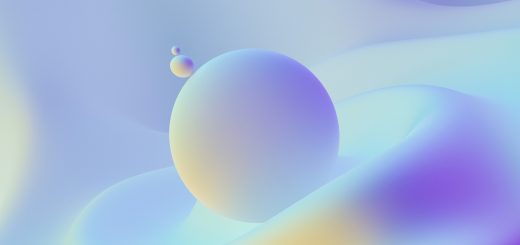Ancient Civilizations: Medicine and Healing Practices

Hey there, amazing readers! 🖐️ Just a quick note: yes, we know there are a lot of ads here. Trust us, we get it—it’s not the prettiest look, but they help us keep this blog alive and kicking. Those pesky little ads cover the costs of all the behind-the-scenes magic, from hosting and tech stuff to creating content we hope you’ll love.
We’re committed to delivering quality posts, and your support (even just sticking around despite the ads) means everything to us. So, bear with us, and thanks for helping us keep the good vibes rolling. Now, on to the fun stuff! 😉
TRANSLATE BUTTON AT THE END OF THE ARTICLE
A Quick Overview
Ancient civilizations have always fascinated us with their advanced knowledge and practices in various fields, including medicine and healing.
From the Egyptians to the Greeks, each civilization contributed unique insights and techniques that have paved the way for modern healthcare practices.
In this article, we will delve into the fascinating world of ancient civilizations and explore their medicinal practices and healing techniques.
Let’s journey back in time to uncover the mysteries of medicine in the ancient world.
Egypt: Pioneers in Medicine
Ancient Egypt is renowned for its pioneering advancements in the field of medicine.
Egyptian physicians were highly skilled and knowledgeable, utilizing a combination of empirical observations and spiritual beliefs in their healing practices.
They believed that the body was made up of interconnected systems and that maintaining balance was crucial for good health.
Some key aspects of Egyptian medicine include:
The Ebers Papyrus, one of the oldest medical texts, contains detailed information on various medical conditions and treatments.
Egyptian physicians used a combination of herbal remedies, surgery, and magical incantations to treat ailments.
They had specialized doctors for different parts of the body, such as dentists, ophthalmologists, and surgeons.
The practice of mummification also involved medical knowledge and techniques to preserve the body for the afterlife.
Mesopotamian Healing Techniques
Mesopotamia, known as the cradle of civilization, also made significant contributions to medicine and healing practices.
Mesopotamian healers believed that illnesses were caused by supernatural forces and used a combination of prayers, incantations, and herbal remedies to cure diseases.
Some key aspects of Mesopotamian medicine include:
The Code of Hammurabi, one of the earliest legal codes, included regulations for medical practice and malpractice.
Mesopotamian healers performed surgeries, including trepanation (drilling holes in the skull) and cauterization.
They believed in the importance of hygiene and cleanliness in preventing diseases.
Clay tablets with medical texts provide insights into the diagnosis and treatment of various ailments.
Chinese Traditional Medicine
Chinese traditional medicine is one of the oldest and most enduring healing systems in the world.
Rooted in ancient philosophical beliefs, Chinese medicine emphasizes the balance of Yin and Yang energies in the body to maintain health.
Some key aspects of Chinese traditional medicine include:
Acupuncture, the practice of inserting thin needles into specific points on the body to restore balance and alleviate pain.
Herbal medicine, using a vast array of plants and herbs to treat various ailments and promote well-being.
Qi Gong and Tai Chi, exercises that focus on movement, breath, and meditation to improve health and vitality.
The concept of meridians, energy channels in the body through which Qi (life force) flows.
Greek Contributions to Healthcare
The ancient Greeks made significant contributions to medicine and healthcare, laying the foundation for modern Western medicine.
Greek physicians, such as Hippocrates and Galen, emphasized the importance of observation, diagnosis, and ethical medical practice.
Some key aspects of Greek medicine include:
The Hippocratic Oath, a code of ethics for physicians that emphasizes patient care and confidentiality.
The theory of the four humors, which posited that an imbalance of bodily fluids caused disease.
Dissection of animals for anatomical studies and understanding the human body.
The concept of clinical observation and recording of symptoms for diagnosis and treatment.
Roman Medical Practices
The Romans inherited much of their medical knowledge from the Greeks but also made significant contributions to the field of medicine.
Roman physicians, such as Galen, furthered the understanding of anatomy and physiology through dissection and experimentation.
Some key aspects of Roman medicine include:
Public health initiatives, such as aqueducts, baths, and sewers, to promote hygiene and prevent diseases.
Military medicine, with Roman army physicians caring for soldiers on the battlefield.
Herbal remedies, surgical techniques, and medical instruments used in Roman healthcare.
The influence of Roman medicine on medieval and Renaissance medical practices.
Indian Ayurvedic Medicine
Ayurveda, the ancient healing system of India, is a holistic approach to health that encompasses the mind, body, and spirit.
Ayurvedic medicine focuses on balancing the three doshas (Vata, Pitta, Kapha) to maintain health and prevent disease.
Some key aspects of Ayurvedic medicine include:
Herbal remedies, using a wide range of plants and minerals to treat various ailments.
Yoga and meditation, practices that promote physical and mental well-being.
Pulse diagnosis, examining the pulse to assess the balance of the doshas and determine the root cause of illness.
Diet and lifestyle recommendations tailored to an individual’s constitution.
Mayan Healing Rituals
The ancient Mayans of Mesoamerica had a sophisticated understanding of medicine and healing rituals.
Mayan healers, known as shamans, used a combination of herbal remedies, spiritual ceremonies, and divination to treat illnesses.
Some key aspects of Mayan healing rituals include:
The use of medicinal plants, such as cacao, tobacco, and various herbs, in healing potions and remedies.
Bloodletting ceremonies, where sharp instruments were used to draw blood as a way to purify the body.
Sweat lodges, rituals involving steam and heat to cleanse the body and promote healing.
Divination practices, such as reading the stars or using sacred calendars to diagnose illnesses.
Aztec Medicine and Herbal Remedies
The Aztecs of ancient Mesoamerica also had a rich tradition of medicine and healing practices.
Aztec healers, known as ticitl, used a combination of herbal remedies, rituals, and sacrifices to treat diseases.
Some key aspects of Aztec medicine include:
The use of medicinal plants, such as chili peppers, cacao, and aloe vera, in treating various ailments.
Rituals and ceremonies honoring the gods of health and healing, such as Xipe Totec and Tlazolteotl.
Sacrificial offerings to appease the gods and seek their intervention in curing illnesses.
Steam baths and herbal teas used for purification and healing purposes.
Inca Healing Practices
The Inca civilization of ancient Peru also had sophisticated healing practices that combined herbal medicine, rituals, and spiritual beliefs.
Inca healers, known as paqo or curandero, used a holistic approach to health and healing.
Some key aspects of Inca healing practices include:
The use of medicinal plants, such as coca leaves, quinoa, and muña, in treating various ailments.
Rituals and ceremonies honoring the spirits of the mountains, rivers, and natural elements.
Divination practices, such as reading coca leaves or using sacred objects to diagnose illnesses.
Massage therapy, using techniques to balance the body’s energy and promote healing.
Medicinal Practices in Persia
Ancient Persia, located in modern-day Iran, also had a long tradition of medicine and healing practices.
Persian physicians, such as Avicenna, made significant contributions to medical knowledge and practice.
Some key aspects of Persian medicine include:
The Canon of Medicine, a comprehensive medical encyclopedia written by Avicenna that influenced medical practice in Europe for centuries.
Herbal medicine, using a wide range of plants and minerals to treat various diseases.
The use of surgery, anesthesia, and medical instruments in Persian healthcare.
The importance of diet, exercise, and lifestyle in maintaining health and preventing diseases.
Common Themes Across Ancient Civilizations
While each ancient civilization had its unique approach to medicine and healing, there are common themes that run through many of them.
These include:
A holistic view of health that incorporates the mind, body, and spirit.
The use of herbal remedies and natural substances to treat illnesses.
Rituals, ceremonies, and spiritual beliefs that influence healing practices.
An emphasis on preventive medicine and maintaining balance in the body.
The role of physicians, healers, and shamans in caring for the sick and injured.
Conclusion
Ancient civilizations have left a lasting legacy in the field of medicine and healing practices.
From the advanced knowledge of the Egyptians to the holistic approach of the Chinese, each civilization contributed valuable insights that continue to influence modern healthcare.
By exploring the medicinal practices of these ancient cultures, we gain a deeper understanding of the interconnectedness of health, spirituality, and nature.
As we navigate the complexities of modern medicine, we can look to the wisdom of the past to guide us towards a more balanced and holistic approach to healing.

The Enlightenment Journey is a remarkable collection of writings authored by a distinguished group of experts in the fields of spirituality, new age, and esoteric knowledge.
This anthology features a diverse assembly of well-experienced authors who bring their profound insights and credible perspectives to the forefront.
Each contributor possesses a wealth of knowledge and wisdom, making them authorities in their respective domains.
Together, they offer readers a transformative journey into the realms of spiritual growth, self-discovery, and esoteric enlightenment.
The Enlightenment Journey is a testament to the collective expertise of these luminaries, providing readers with a rich tapestry of ideas and information to illuminate their spiritual path.
Our Diverse Expertise 🌟
While our primary focus is on spirituality and esotericism, we are equally passionate about exploring a wide range of other topics and niches 🌍📚. Our experienced team is dedicated to delivering high-quality, informative content across various subjects ✨.
To ensure we provide the most accurate and valuable insights, we collaborate with trusted experts in their respective domains 🧑🏫👩🏫. This allows us to offer well-rounded perspectives and knowledge to our readers.
Our blog originally focused on spirituality and metaphysics, but we’ve since expanded to cover a wide range of niches. Don’t worry—we continue to publish a lot of articles on spirituality! Frequently visit our blog to explore our diverse content and stay tuned for more insightful reads.





